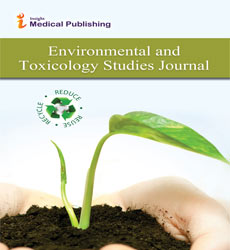Collagen phosphate porous scaffolds for novel bone tissue engineering concept
Jana Brtnikova Central European*
Institute of Technology-Brno University of Technology, Czech Republic
Received Date: 2022-07-15 | Accepted Date: 2022-07-22 | Published Date: 2022-07-28
Abstract
Due to the constant lack of suitable autologous materials used in reconstructive surgery (mostly due to trauma or tumour removal), new materials with improving bone regeneration capacity have a very high potential in clinical practice. The use of polymeric or biopolymeric porous scaffolds with addition of bioceramic components to support bone cells and tissue growth is longstanding area of interest. The original concept of bone tissue engineering was to use collagen composite scaffolds seeded with stem cells. In a later concept, stem cells were replaced by expensive growth factors. Suitable cheaper candidates are protein-free signalling molecules, e.g. bioactive polyphosphates. In this work, three-dimensional porous collagen composite scaffolds were prepared by freeze-drying method. The bovine collagen type I was combined with calcium phosphates differing in solubility and resorbability. Therefore, hydroxyapatite and a mixture of β- and α-tricalcium phosphates in ratios of 1:1, 1:2 and 2:1 have been applied. The effect of bioceramics solubility and particle sizes on scaffolds morphology, biomechanics, physical and biological properties was observed. Addition of bioceramic particles changed morphology of the samples resulting in decreasing the pore size, while the porosity becomes nearly the same as in all tested samples. Bioceramics, especially hydroxyapatite particles made the collagen scaffolds less hydrophilic; however, they stabilized scaffolds against the effect of enzymatic degradation. The biomechanical properties of the samples were tested in both dry and hydrated state. In dry state, collagen scaffolds reached the highest compressive strength, in contrary to the hydrated state, where samples containing bioceramic particles were stiffer but the strength values were one order lower comparing to samples in dry state. During in vitro experiments, none of samples was found to be cytotoxic and the most preferable environment for cell adhesion and proliferation was composite scaffold with the ratio of HAp:β- TCP:1:1.
Open Access Journals
- Aquaculture & Veterinary Science
- Chemistry & Chemical Sciences
- Clinical Sciences
- Engineering
- General Science
- Genetics & Molecular Biology
- Health Care & Nursing
- Immunology & Microbiology
- Materials Science
- Mathematics & Physics
- Medical Sciences
- Neurology & Psychiatry
- Oncology & Cancer Science
- Pharmaceutical Sciences
